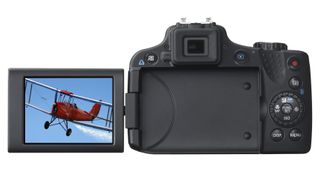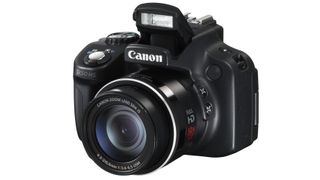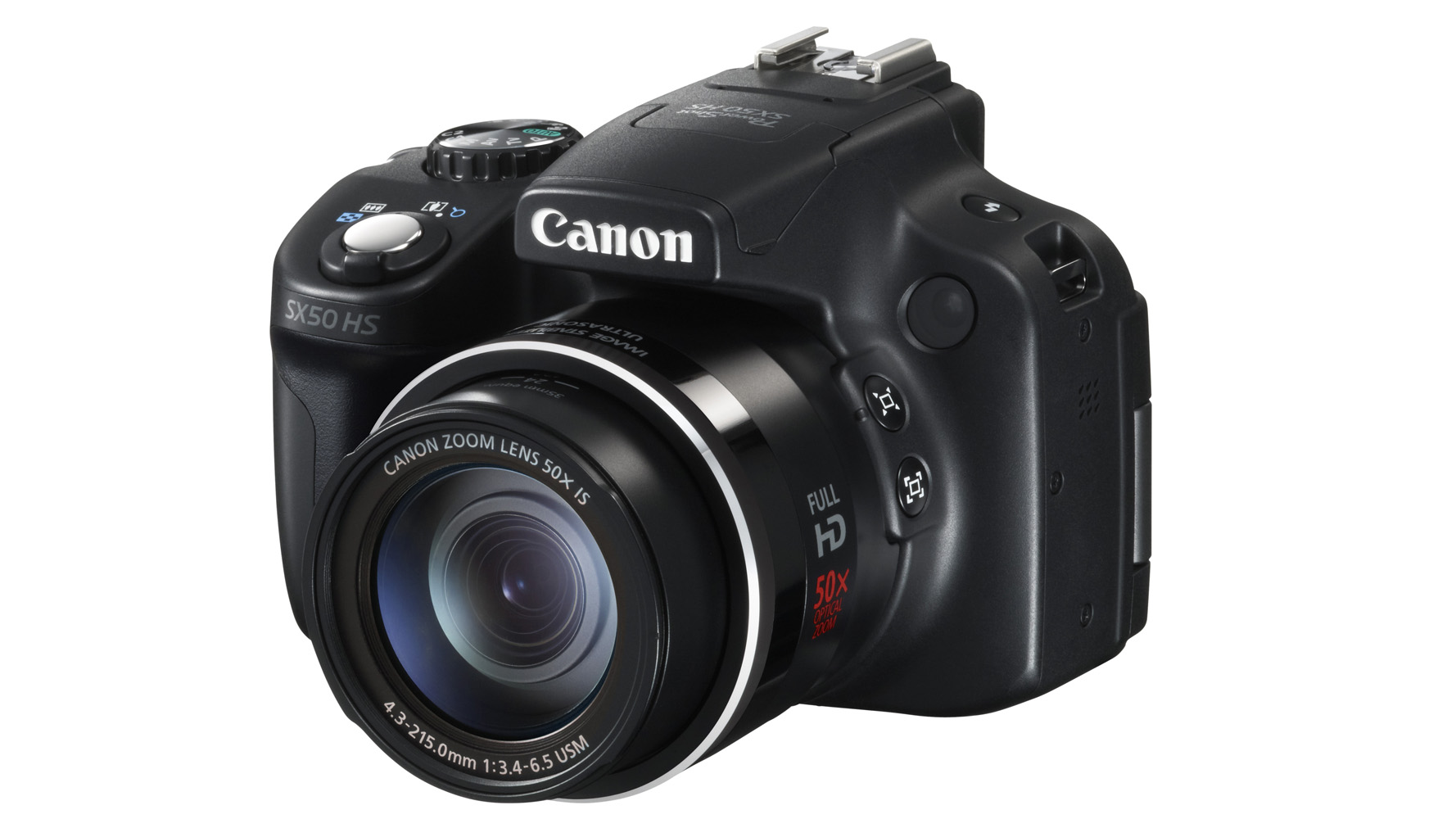TechRadar Verdict
Pros
- +
50x zoom range
- +
Raw format shooting
- +
Articulating screen
- +
Low image noise
Cons
- -
Poor EVF
Why you can trust TechRadar
The bridge area of the compact camera market is one part of the market that is still doing well in what is otherwise a declining segment.
Manufacturers are packing larger and larger zooms onto these cameras which, for many, act as an alternative to a DSLR, or a step up from a standard compact camera.
Two key features distinguish the 12.1 million pixel Canon PowerShot SX50 HS from the 12.1MP Canon PowerShot SX40 HS that it replaces at the top of Canon's bridge camera or superzoom lineup.

The Canon PowerShot SX50, announced at Photokina 2012 alongside the Canon PowerShot G15 and Canon EOS 6D, has a 50x optical zoom that covers the equivalent of 24-1200mm, whereas the zoom range on the Canon SX40 is 35x, or 24-840mm.
This is a phenomenal zoom range that most DSLR users can only dream of, or perhaps look to achieve at huge expense. The Canon PowerShot SX50 HS is much more affordable, with a price of £448 (about AU$700) in the UK and US$479 in the US.
The 24mm point is ideal for capturing landscapes and indoor scenes, while the longest telephoto point is perfect for photographing distant wildlife or picking out details.
For those who feel that a 50x zoom still isn't enough, the camera boasts a digital zoom that expands it to 100x. Canon calls this 100x Zoom Plus.

Another important improvement that the Canon SX50 HS makes over the Canon SX40 is that it can record raw format images as well as JPEG files. For enthusiast photographers, this makes the camera a much more attractive proposition, since it means that the files can be processed manually if you desire.
Probably the biggest competitor to the Canon SX50 HS in the bridge camera market is the also recently announced Panasonic FZ200. Although that camera only features a 24x optical zoom, it does boast an f/2.8 constant aperture throughout the range. By contrast, the Canon can only manage f/3.4 at the widest point, rising up to f/6.5 at the telephoto end.
Other features of the Canon SX50 include a Digic 5 processor, which is the same as those found in Canon's top-end DSLRs such as the Canon 5D Mark III. This should mean that noise is controlled well at high sensitivity settings, and it also facilitates Full HD video recording.
Amy has been writing about cameras, photography and associated tech since 2009. Amy was once part of the photography testing team for Future Publishing working across TechRadar, Digital Camera, PhotoPlus, N Photo and Photography Week. For her photography, she has won awards and has been exhibited. She often partakes in unusual projects - including one intense year where she used a different camera every single day. Amy is currently the Features Editor at Amateur Photographer magazine, and in her increasingly little spare time works across a number of high-profile publications including Wired, Stuff, Digital Camera World, Expert Reviews, and just a little off-tangent, PetsRadar.
Most Popular


